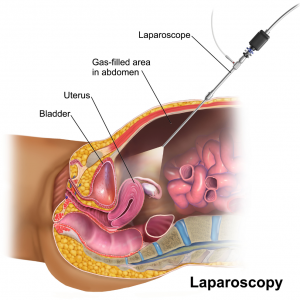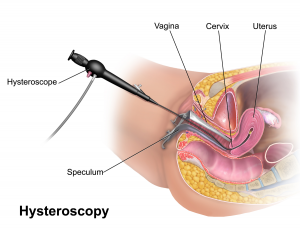 Best Gynecological Endoscopy Laparoscopy
Best Gynecological Endoscopy Laparoscopy
Endoscopy is the science of looking inside the human body without opening it up. It was telescopic instruments to view the interior of the body, which are inserted either through natural openings or through small artificial ones.
Endoscopy can be used to look at any part of the body.
Gynae endoscopy is of three main types :-
Laparoscopy
What it means?
Laparoscopy is a procedure by which a telescope is introduced into the abdominal cavity to assess the pelvic organs and perform any required surgery. It is done as a day care procedure most of the time but may require admission to the hospital for complicated cases. It may be diagnostic or operative.
Who are suitable candidates?
- Patients with unexplained infertility – diagnostic laparoscopy to rule out peritoneal endometriosis, etc.
- To check for tubal patency in case of blocked tubes
- Operative –
– Myomectomy – removal of fibroids
– Cystectomy – removal of endometriotic or other ovarian cysts
– Adhesiolysis – means removal of intraabdominal bands on the uterus
– Salpingectomy for ectopic pregnancy, hydrosalpinx
– Tubal surgery – recanalization
– Ovarian drilling
– Hysterectomy – removal of uterus
What are its main steps?
- Complete workup of patient is done to assess preoperative status and suitability for anaesthesia
- Patient is kept under overnight fasting
- Surgery performed under general anaesthesia
- Telescope and instruments introduced from small puncture sites on the abdomen
- Patient kept under observation for 4-5 hours post-operative

Advantages
- Short hospital stay
- Faster recovery
- Small scar
Hysteroscopy
What it means?
Hysteroscopy is a procedure by which a telescope is introduced into the uterine cavity to assess the uterus and perform any required surgery. Depending upon the type of procedure local or general anaesthesia may be used. It may be diagnostic or operative.
Who are suitable candidates?
Diagnostic –
- Before undergoing embryo transfer. In addition to finding abnormalities it stimulates the endometrium for implantation
- In case of abnormal uterine bleeding or postmenopausal bleeding
- Thin endometrium
Operative –
- Myomectomy – removal of fibroid
- Polypectomy removal of endometrial polyp
- Adhesiolysis
- Septum resection
- Correction of uterine anomalies
What are its main steps?
- Complete workup of patient is done to assess preoperative status and suitability for anaesthesia
- Patient is kept under overnight fasting
- Surgery performed under general anaesthesia
- Telescope and instruments introduced from cervical canal
- Patient kept under observation for 4-5 hours post-operative

Advantages
- Short hospital stay – OPD procedure
- No cut made in abdomen
Advanced Gynae Endoscopy
Advanced endoscopic procedures avoid the need for open surgery, thus reducing cost, time spent in anesthesia, recovery time and discomfort. Some of the procedures done here include:
a. Laparoscopic cervical cerclage – for incompetent os
b. Laparoscopic sacropexy – for prolapse uterus
c. Laparoscopic TLH (hysterectomy) – removal of uterus
d. Laparoscopic myomectomy – removal of large fibroids, difficult cases of fibroids and endometriosis
e. And others
